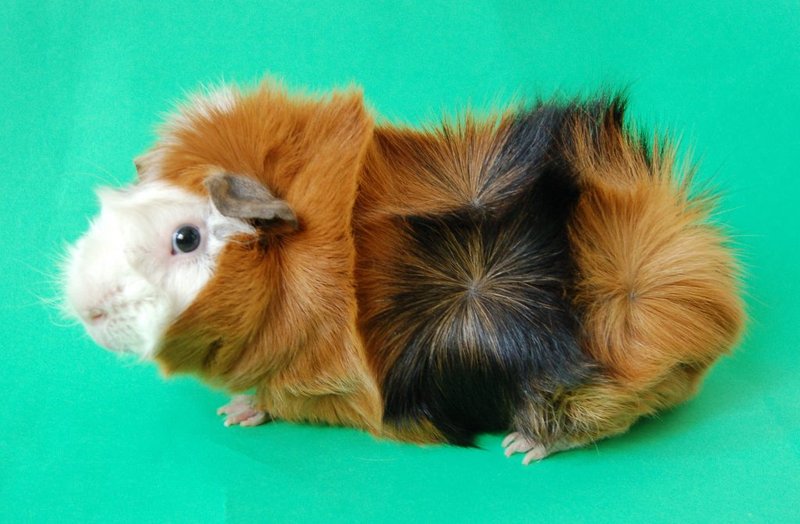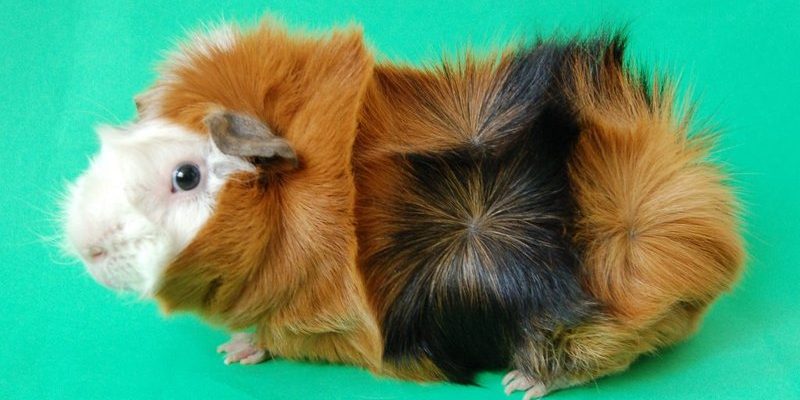
Now, you might be wondering what sets the Abyssinian apart from other guinea pig breeds. They’re not just about good looks; they also have distinct personalities. Plus, understanding how to groom and care for them is key to keeping your furry friend happy and healthy. So, grab your favorite drink, and let’s dive into the enchanting world of Abyssinian guinea pigs!
What Do Abyssinian Guinea Pigs Look Like?
First off, let’s talk about their stunning appearance. Abyssinians are easily recognizable thanks to their unique rosettes—little swirls of fur that give their coat a textured look. Imagine a tiny hedgehog with a stylish ‘do; that’s kind of what they look like! Typically, their fur is short and can come in a variety of colors, including black, white, brown, and cream. Each Abyssinian is like a little canvas, showcasing its distinct colors and patterns.
Another notable feature is their round bodies and short legs, which just adds to their cuteness factor. These adorable critters usually weigh between 1.5 to 2.5 pounds when fully grown. With big, bright eyes that shine with curiosity, they definitely have a way of melting your heart. You might find yourself lost in those expressive gazes, wondering what they’re thinking about!
If you’re thinking about bringing home one of these beauties, remember they thrive in pairs or groups. Their affectionate nature means they enjoy the company of other guinea pigs. So, picking up two Abyssinians is like adopting double the cuteness!
Personality Traits of Abyssinian Guinea Pigs
Here’s the thing about Abyssinian guinea pigs: they’re not just cute; they have personalities that can light up a room. Generally, they are friendly, curious, and social creatures. You might find that they enjoy interacting with people, often responding to your voice with happy little squeaks. It’s heartwarming, like they’re chatting with you about their day!
Abyssinians can be a bit energetic, which means they’ll love to play and explore their surroundings. You might catch them zooming around their cage or investigating every nook and cranny. Their playful nature makes them excellent companions for families, as they often love gentle playtime with their humans.
But every guinea pig has its quirks. Some Abyssinians can be a bit shy, especially if they’re new to a home. It’s essential to give them time to adjust. Think of it as helping a new friend feel comfortable; quiet moments with them can build trust. Once they warm up, you’ll discover a loyal companion that loves to snuggle and interact with you.
Grooming Needs for Abyssinian Guinea Pigs
Now that we’ve established how adorable and personable these little guys are, let’s chat about grooming. Surprisingly, Abyssinians don’t require as much grooming as some other breeds due to their short coats. However, keeping their fur healthy and clean is still important. Honestly, it’s a good practice to check on them regularly, like giving your plant a little water now and then.
First, brushing your Abyssinian once a week can help remove loose hair and prevent matting around those rosettes. A simple grooming brush will do the trick. Just be gentle, as your guinea pig might not be a fan of too much fussing at first.
Bathing is usually not necessary for these little ones unless they get into something particularly messy. If you do decide to give them a bath, use a guinea pig-specific shampoo and ensure the water is warm. You want to make bath time a pleasant experience, not a scary one. And please—don’t forget to dry them off thoroughly after!
Additionally, regular nail trimming is vital. Their nails can grow quickly, and if they get too long, it can be uncomfortable for them. You can use small animal nail clippers or a nail grinder, but be careful not to cut too close to the quick, which can be painful.
Diet and Nutrition for Abyssinian Guinea Pigs
Feeding your Abyssinian the right diet contributes significantly to their overall health. These furry pals are herbivores, so think hay, vegetables, and a small amount of pellets. Timothy hay should make up a large portion of their diet; it helps them maintain a healthy digestive system and keeps their teeth from overgrowing.
You might also want to introduce a variety of fresh vegetables, like bell peppers, leafy greens, and carrots. Just remember to introduce new foods slowly to avoid tummy troubles. Fresh veggies are like treats to them, adding color and crunch to their meals!
Commercial guinea pig pellets can be included, but opt for high-quality ones without additives or seeds. A little goes a long way; they only need about 1/8 cup a day. And, of course, fresh water should always be available to keep them hydrated.
It’s tempting to share your snacks, but be careful! Certain foods like chocolate, avocados, and onions are toxic to them. Always check before sharing, because their health is a priority!
Creating a Comfortable Habitat
To make your Abyssinian feel at home, it’s essential to set up a cozy habitat. A spacious cage is a must—something that’s at least 7.5 square feet for two guinea pigs. The cage should be situated in a quiet area, away from direct sunlight and drafts. Think of it as finding the perfect cozy corner in a coffee shop!
Bedding is another crucial aspect. You can use aspen shavings, paper-based bedding, or fleece liners. Just avoid cedar or pine shavings, as they can harm your pet’s health. You want a soft, absorbent base that’s easy to clean.
Don’t forget to provide hiding spots! Abyssinians love to feel secure. Use tunnels, small boxes, or even igloo-shaped hides to create a safe space. Add chew toys to keep their teeth healthy and provide enrichment. They’re natural explorers, and a few toys will keep their curious minds engaged!
Common Health Issues to Watch For
Just like any pets, Abyssinian guinea pigs can face health challenges. Being aware of common health issues can help you catch problems early. Dental issues are frequent among guinea pigs, especially if their diet isn’t balanced. Regular check-ups with a vet can help monitor your furry friend’s dental health.
Another concern is respiratory issues, which can stem from poor living conditions or exposure to dust. Ensure their habitat is clean and well-ventilated. If you notice sneezing, coughing, or lethargy, it’s time to consult your vet.
Lastly, watch for signs of wet tail syndrome or diarrhea, which can indicate dietary problems or stress. Keeping a close eye on their droppings can help you spot issues before they escalate.
Final Thoughts on Caring for Abyssinian Guinea Pigs
Caring for an Abyssinian guinea pig is a journey filled with joy, laughter, and the occasional hiccup. By understanding their appearance, personality, and grooming needs, you can create a loving and healthy environment for your new friend. These little creatures might be tiny, but they have a way of filling your heart and home with happiness.
So, whether you’re sitting on the couch, watching your Abyssinian zoom around, or cuddling them during a quiet moment, know that you’re providing them a safe and loving life. After all, every little squeak and wiggle brings a smile, reminding us why we love our furry companions. Remember, the journey of pet ownership is just as rewarding as the destination!

